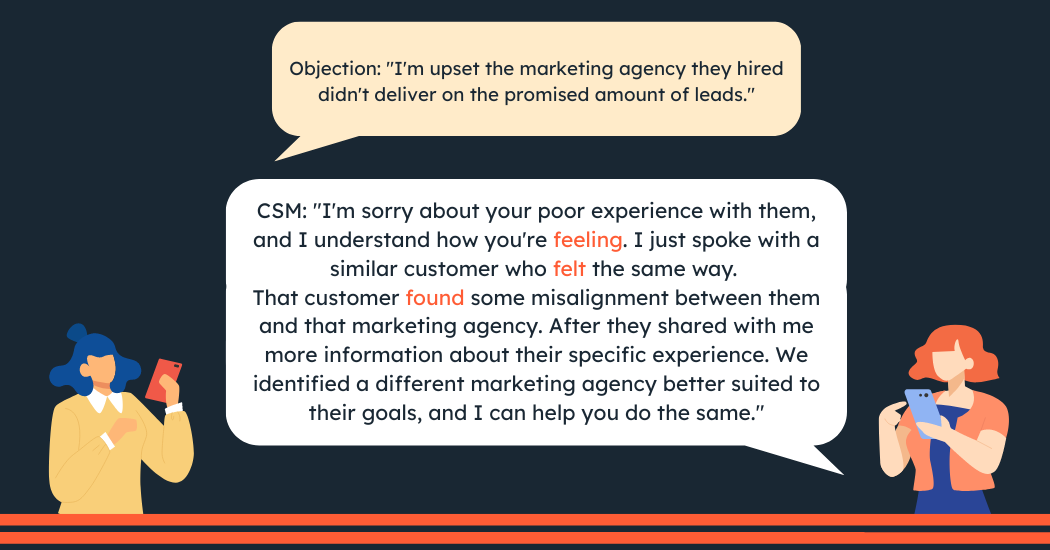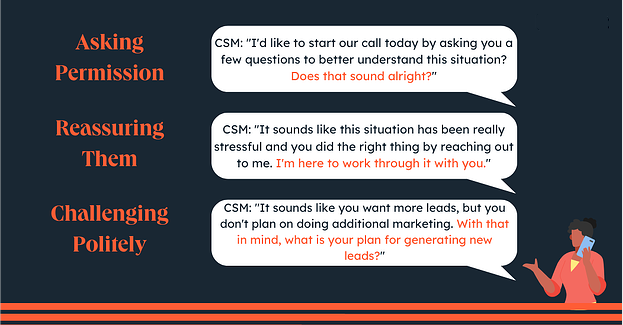Dale Carnegie said in How to Win Friends and Influence People, “The only way on Earth to influence other people is to talk about what they want and show them how to get it."

In the service industry, persuading someone to trust you with their time and money isn't uncommon. You have to prepare for customers to question your intentions or push back on your suggestions. This is why it's critical to understand what matters to a customer and their company — sometimes, it requires persuasion skills to get the customer the best solution you can provide.
In this post, we'll discuss just how valuable having persuasion skills can be, how to become more persuasive, and what to avoid when persuading customers. And if you're in a pinch, use these jump links to get the information you need.
Start solving for the customer today with the help of these 61 helpful templates.
The Importance of Persuasion Skills
How to Be Persuasive with Customers
Barriers to Effective Persuasive Communication
The Importance of Persuasion Skills
Getting on your customer's good side is an obvious benefit of having good persuasion skills, but it's a valuable skill to have in more ways than one. Good persuasion skills can help you:
People are hesitant about what they don't know or understand. These reservations can hold them back from creating better processes or solutions they might not know are options. With effective persuasion, you can help make more happy customers.
Being able to influence others is a skill that upper management notices. Persuasive skills reflect vital leadership behaviors, and that quality could aid your career growth or even salary negotiating.
Upper management will place their trust in their best customer success managers for highly profitable accounts. They're looking for CSMs that are highly confident and good communicators, and being good at persuasion can keep them engaged with your company and convince them to buy more products or services.
How to Be Persuasive with Customers
1. Focus on having a real conversation instead of telling customers what to do.
Kaitlin MacDonald, a Mid-Market Sales Manager here at HubSpot, shared her thoughts about how CSMs can convey value to customers and persuade them to keep working with you.
"...any call shouldn't be about what I think matters. It should be about what the customer values, and it should be a conversation." MacDonald makes a great point — a conversation should revolve around learning about the other person, so the chat will feel more real than being told what to do. Some traits of great conversationalists to take into your conversation are:
As a CSM, you can ask your customer about their reasoning for changing their mind about a product or service thoughtfully and respectfully. An honest conversation can prove that you care about the customer and their business — even if they do business elsewhere.
Pro Tip: Feel free to veer off your usual script and just listen and engage with the customer. Sometimes getting to the true root of their problems means speaking with them and making them feel at ease before they share all that you need to know.
2. Ask empathetic questions to show your customers that you care.
Barrett King, a HubSpot Senior Manager in Partner Strategy & Ops, shares a helpful strategy for persuasion known as Feel, Felt, Found strategy. It's a sales tactic to demonstrate empathy and understanding while also moving forward with possible solutions.
It's important to know that your solution needs the customer's buy-in — you can't just offer one up without seeing if it is a good fit. An example exchange between a customer and an empathetic and understanding CSM is as follows.

Pro Tip: No matter the phrases you choose, make sure you appear genuine. It's important to show your customer that you care and empathize with whatever situation you are dealing with to create trust that'll lead them to want to hear more from you.
3. Build trust through your tone and attitude.
You have to build trust with the customer before you can provide value. By letting them know you care and have good intentions during the process, they'll be more likely to tell you more about themselves and become more open to what you have to say. Speak with your words and body language in a way that makes them feel comfortable and respected.
You can use a softer tone and language to provide value and inspire buy-in by:

Pro Tip: Put yourself in the customer's shoes and think about how you want someone to speak to you. Choose your words and tone carefully, and let them have the floor to speak their mind so you can gain enough context before listing solutions.
4. View objections are opportunities to learn.
Entrepreneur Kevin Duam said, “Amazingly persuasive people are constantly listening to you and not themselves. They already know what they are saying. You can't effectively persuade if you don't know the other side of the argument."
An objection is not a roadblock but an opportunity to better understand your customer. For example, if someone says, “I haven't seen ROI from ___," it's not helpful to counter with, “But I see you generated 50 new leads last month!" Instead, it's an opportunity to understand what ROI means to the customer.
Pro Tip: Use objections to learn and probe further. The focus of a call is to understand what the objection is and why it matters to your customer — just make sure you aren't being too pushy or invasive, as your customer may end the conversation short if they become annoyed.
Barriers to Effective Persuasive Communication
We know you're looking for tips on becoming more persuasive with your customers, but there's a fine line between effectively persuading someone and being pushy. Here's some behaviors to avoid when working with customers.
1. Lack of credibility or preparedness.
A big roadblock to convincing a customer to do business with you starts with a weak foundation. If you aren't presenting yourself as a well-informed, trustworthy rep, why should they give you their time and attention?
Open your conversations by letting them know you've done your research and that you are here to help them reach their goals.
2. Not being perceptive to their needs.
Before you can persuade a customer of anything, they also need to know that you understand their needs. Do you need to provide them with more empathy? Do you need to go more into detail or provide them with more of a helping hand with your product or service? Listen to their concerns and circumstances to get their perspective before you jump into persuasion.
3. Using language that's challenging to understand.
You must be conscientious about how you approach persuasive communication during customer interactions. These people are coming to you for solutions, and many may need help understanding the same corporate jargon or metrics that you do.
To avoid confusing your customer and losing their interest, prioritize delivering clear and concise information that even non-industry individuals can understand.
Put Yourself in the Customer's Shoes When You Persuade
Listening to the customer and being receptive to their questions or challenges holds weight. Taking these actions will allow you to understand their business fully, and if you play your cards right — you might persuade them, too.













